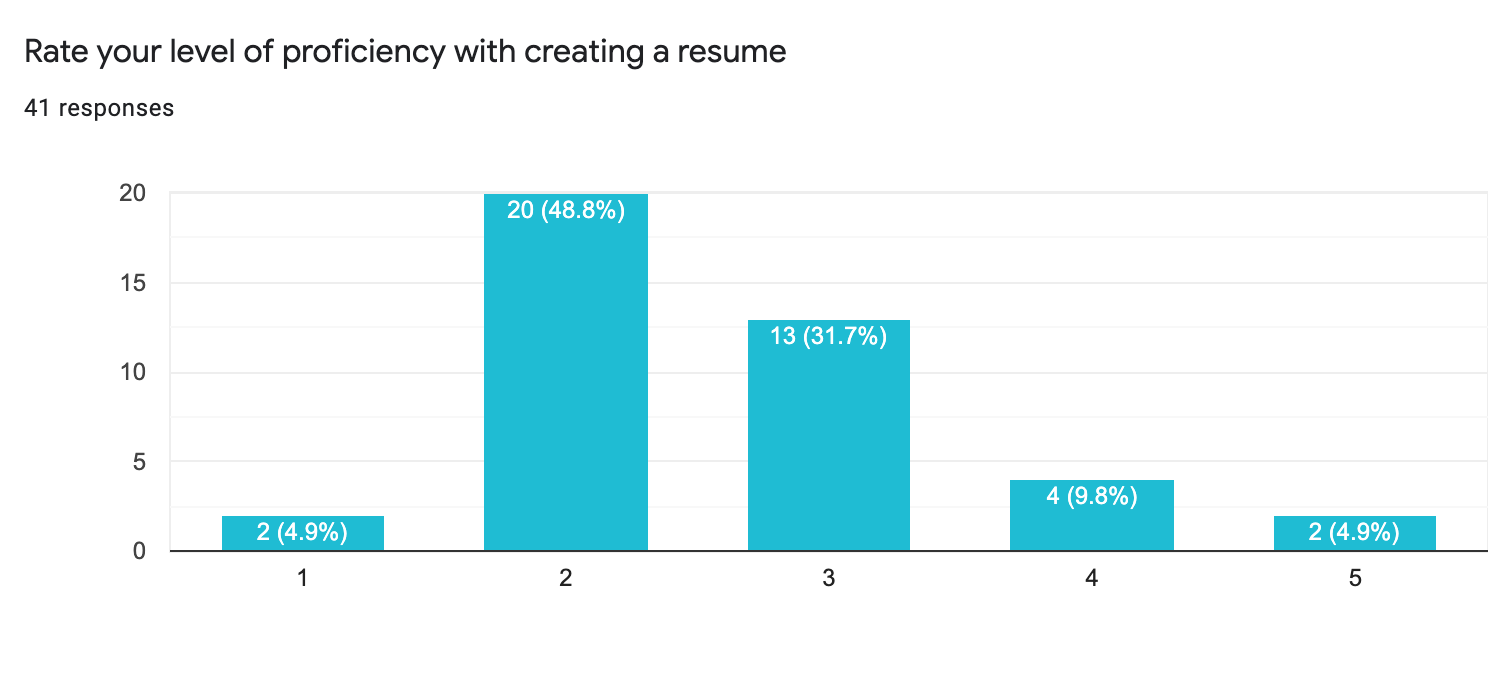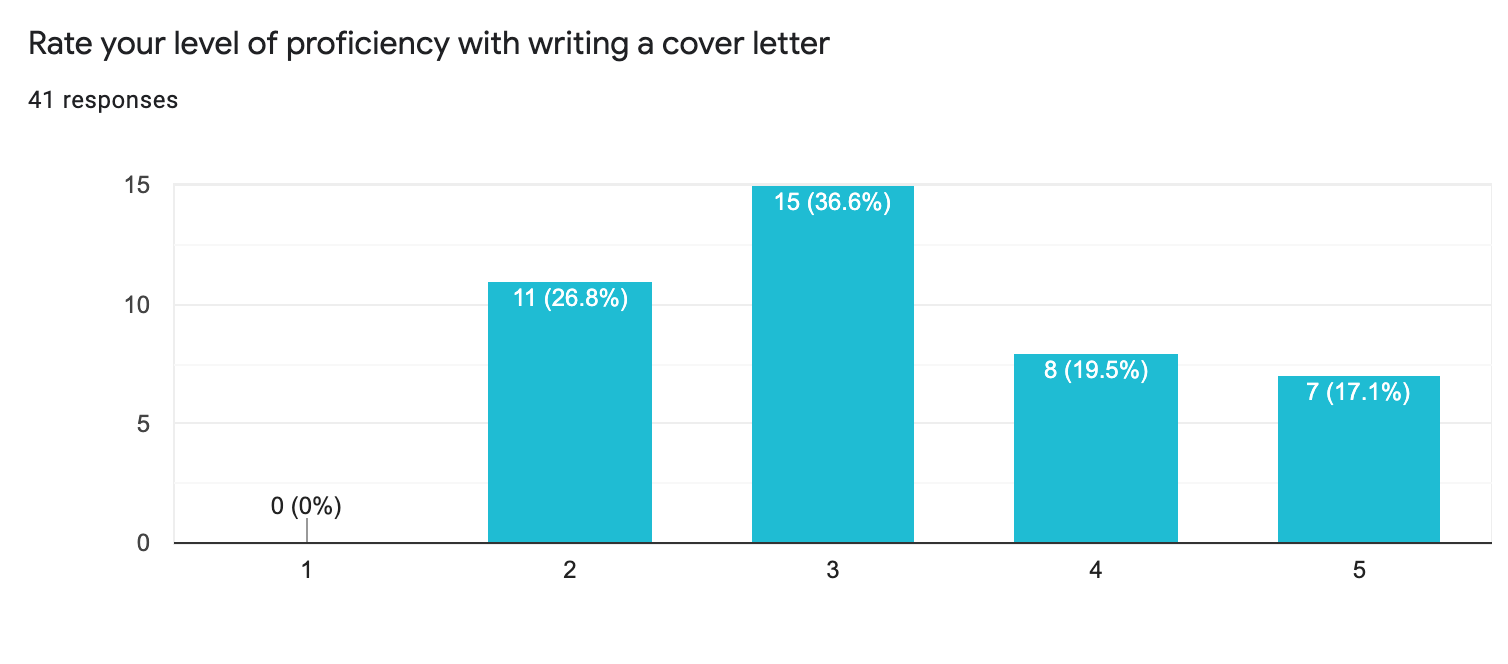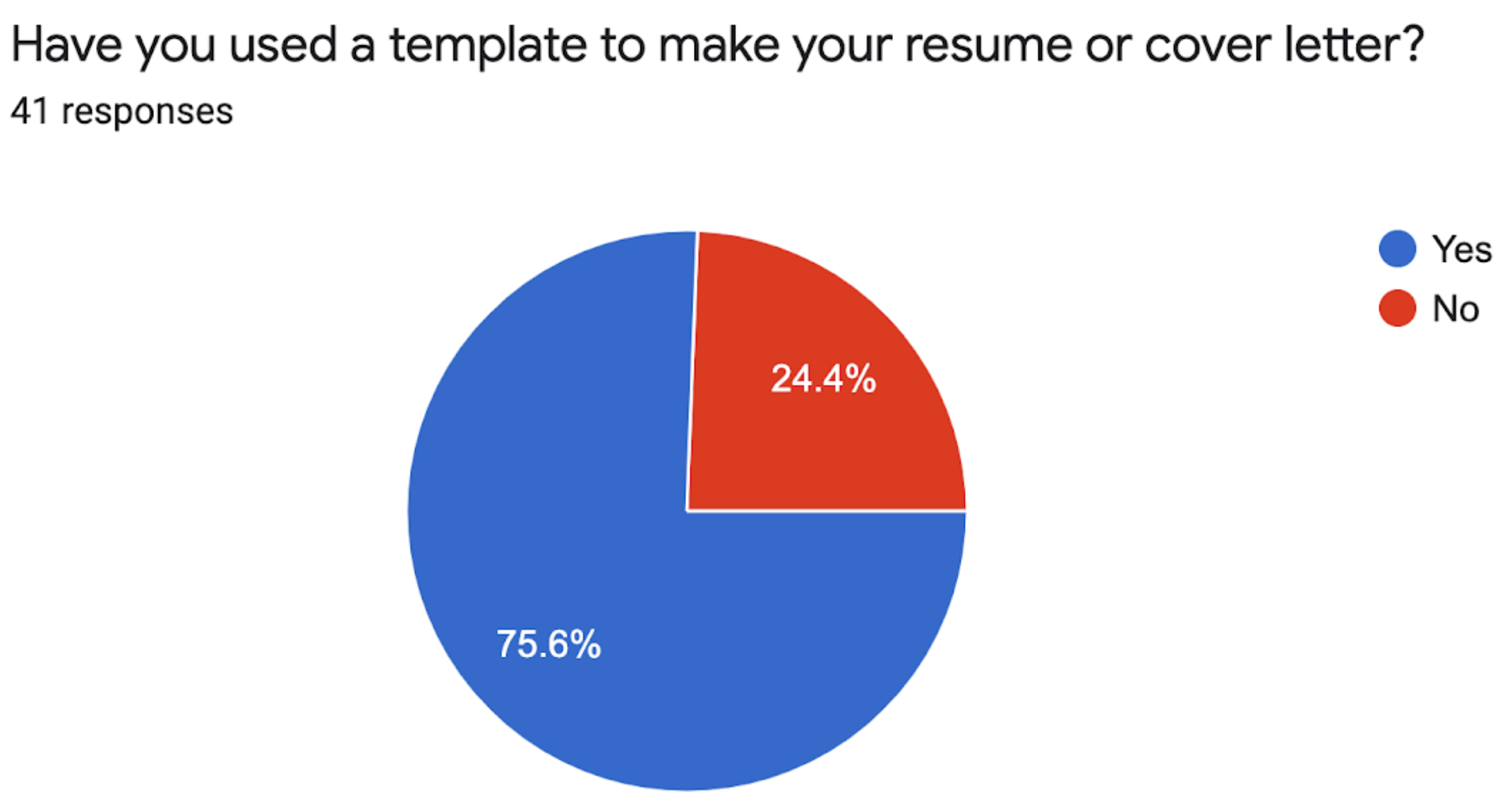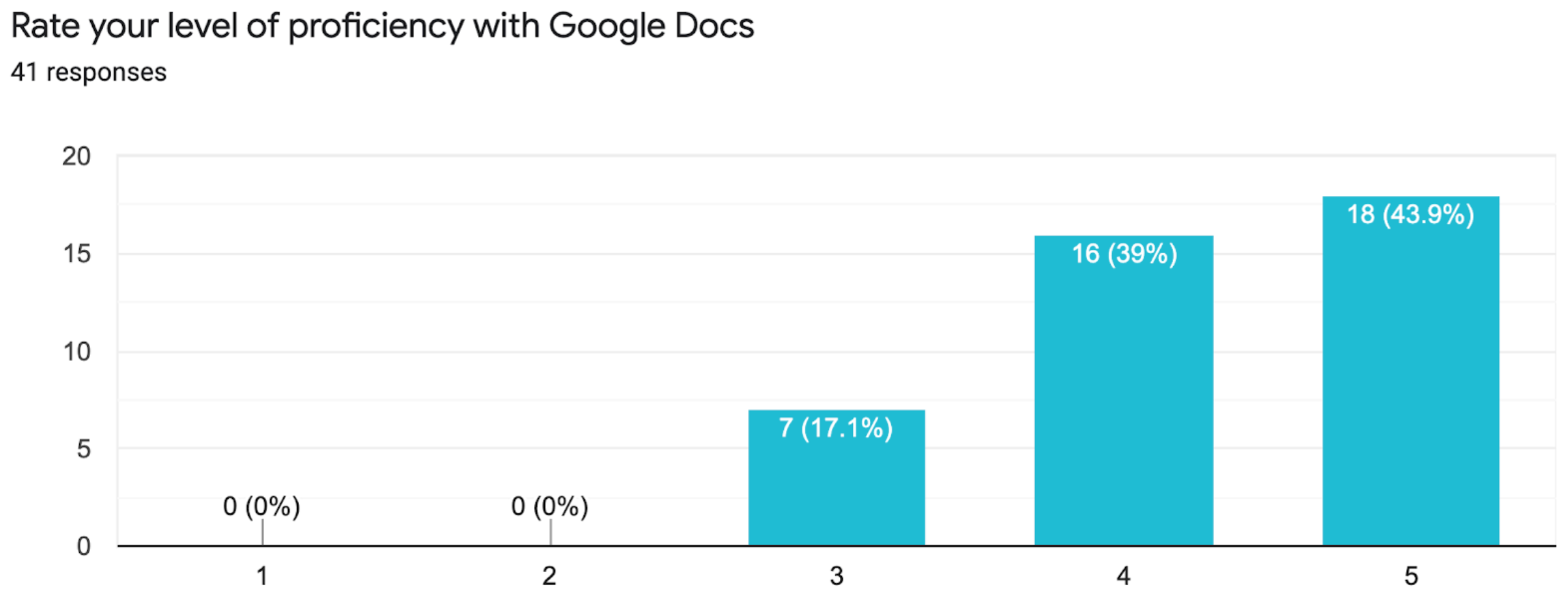Survey Results and References
Although our team’s opinions and personal experiences were helpful in gaining insight on what should be included in this website, we also decided to create a survey to ask other college students about their experience with certain professional development topics. Some of the most relevant questions are displayed below. We asked survey participants to rate LinkedIn, resumes, and cover letters on a scale from easy to hard.

Results 📊

These survey results show that 56% of respondents feel that using LinkedIn is not straightforward or difficult. The rest of respondents feel that LinkedIn is easy or manageable. We can see that many are not experts at LinkedIn, and there is much to learn when it comes to using the platform. This is why we created our LinkedIn and networking page of our website, and hope students can find good advice and resources to make LinkedIn an easier place to navigate.

These results suggest that the majority of students (>53%) find creating a resume relatively easy. While this is a positive outcome, this does not imply that these students are putting out the best resumes they could - the techniques discussed in our resume resources help address this.

These results highlight students’ lack of confidence in cover letter writing skills. The majority of students (30/41 or 73.2%) found cover letters average to difficult to write. Likewise, 0% of students felt exceptionally strong with their proficiency. To help improve students’ proficiency and confidence with writing cover letters we created a cover letter resources page.
We also asked survey participants how likely they would use a site for certain professional development resources, with the results shown below.

From the above survey question, we see that a majority of respondents would “maybe”, “very likely”, and “100%[Likely]” use a website with resources regarding how to make a LinkedIn profile, how to apply for a job using LinkedIn, or how to network. These responses are very positive in terms of our website components, as we offer a page dedicated to LinkedIn and networking.
We see above that respondents are overwhelmingly “maybe”, “very likely”, and “100% [likely]” to use a website for formatting a resume or cover letter. This was tremendously encouraging to us as we prepare our content and put our project together. Similarly, respondents would overwhelmingly use a website for “resume templates” which confirmed our priority to include an easily adaptable Google Doc resume template in our website’s resume resources. Finally, respondents also showed a very strong interest in a comparison of good (strong) and bad (weak) resumes; since this aligned with the suggestions of Catherine G.P. Berdanier, we made sure to include such a comparison in our website’s resume resources (Berdanier).
Our team believes that Google Docs is the best way to use and edit resume/cover letter templates, so to back up our claims we asked survey respondents if they have used a template before and what their proficiency with Google Docs is.


From the above chart, we see that an overwhelming majority of respondents (>75%) have used a template to create a resume or cover letter. We thought this was significant and, therefore, made sure to create and include a Google Doc resume template that students can copy and adapt from our website’s resume resources page.

The level of proficiency shown in the above responses indeed backs up our claim that Google Docs is one of the most popular word-processing tools that students use these days as nearly half the respondents describe it as their “go-to word processing tool” and the other half either has strong experience (4 out of 5) or is familiar with the tool (3 out of 5).
Feedback Survey 💬
https://forms.gle/T9PgrL7PRVddjpXj7